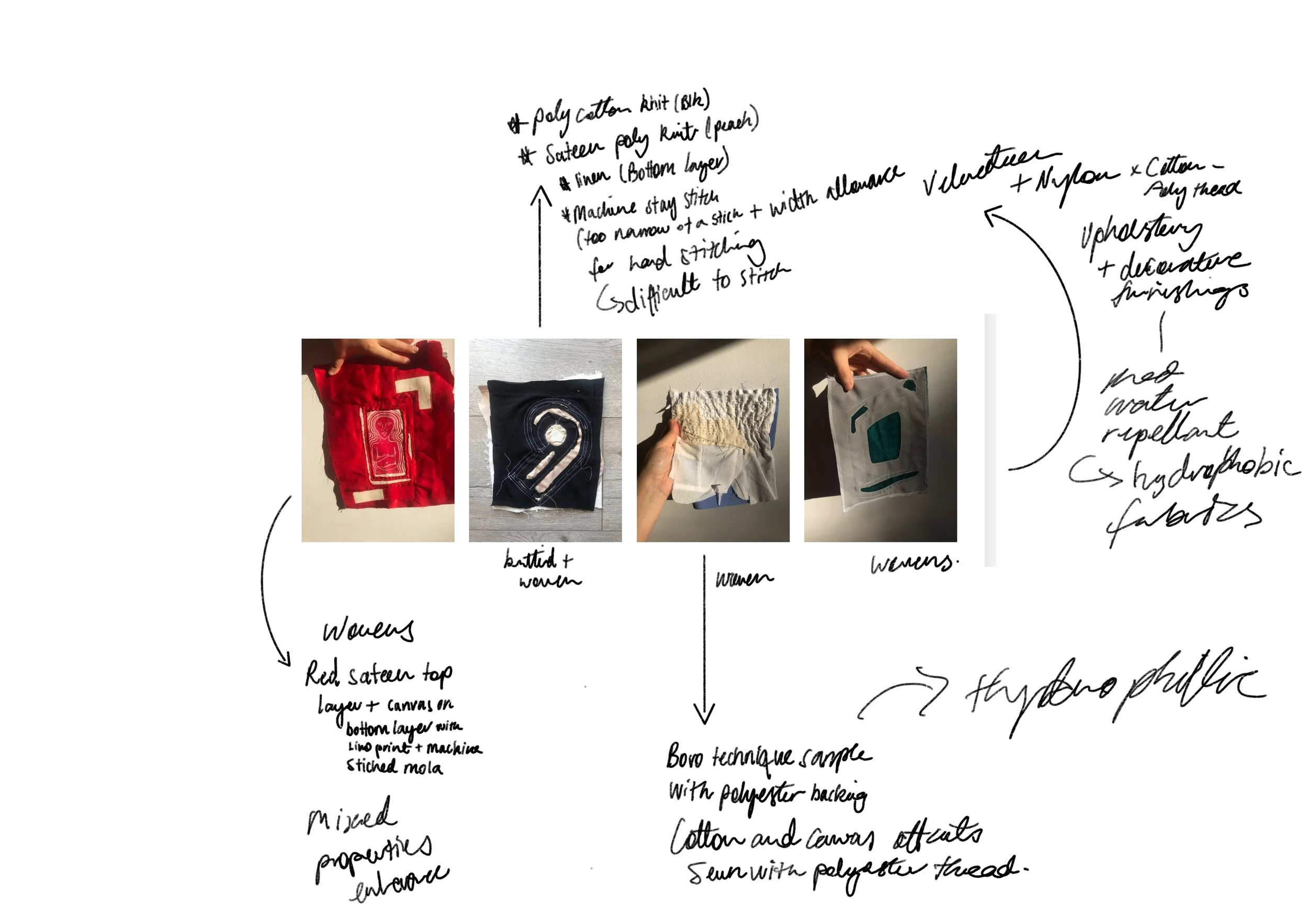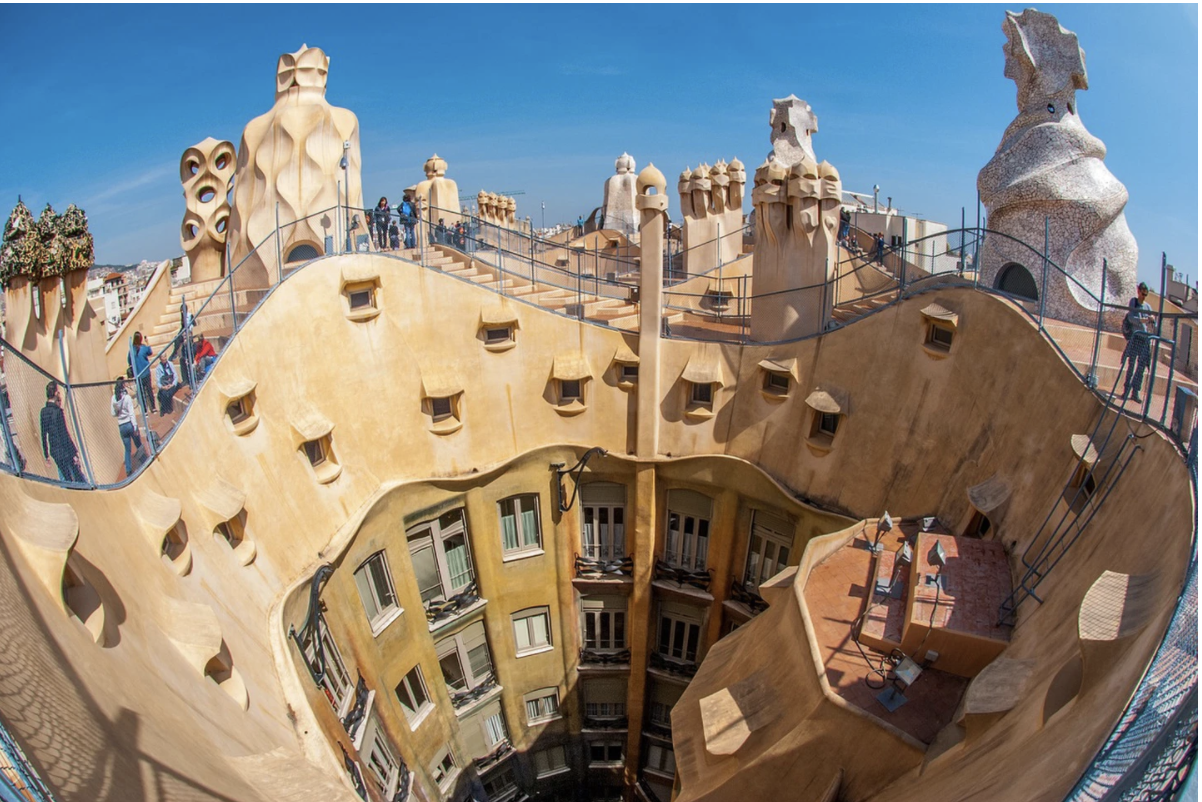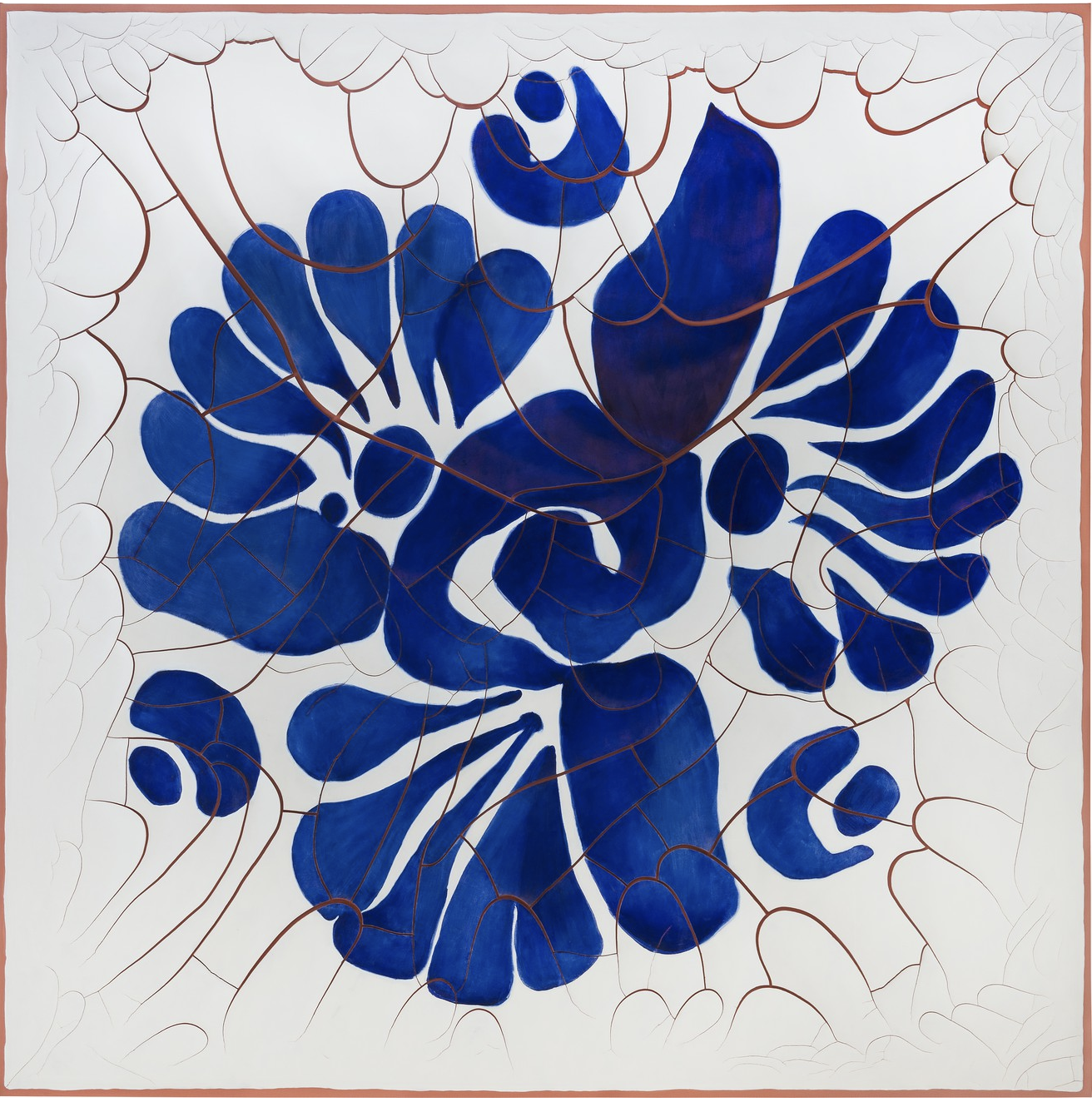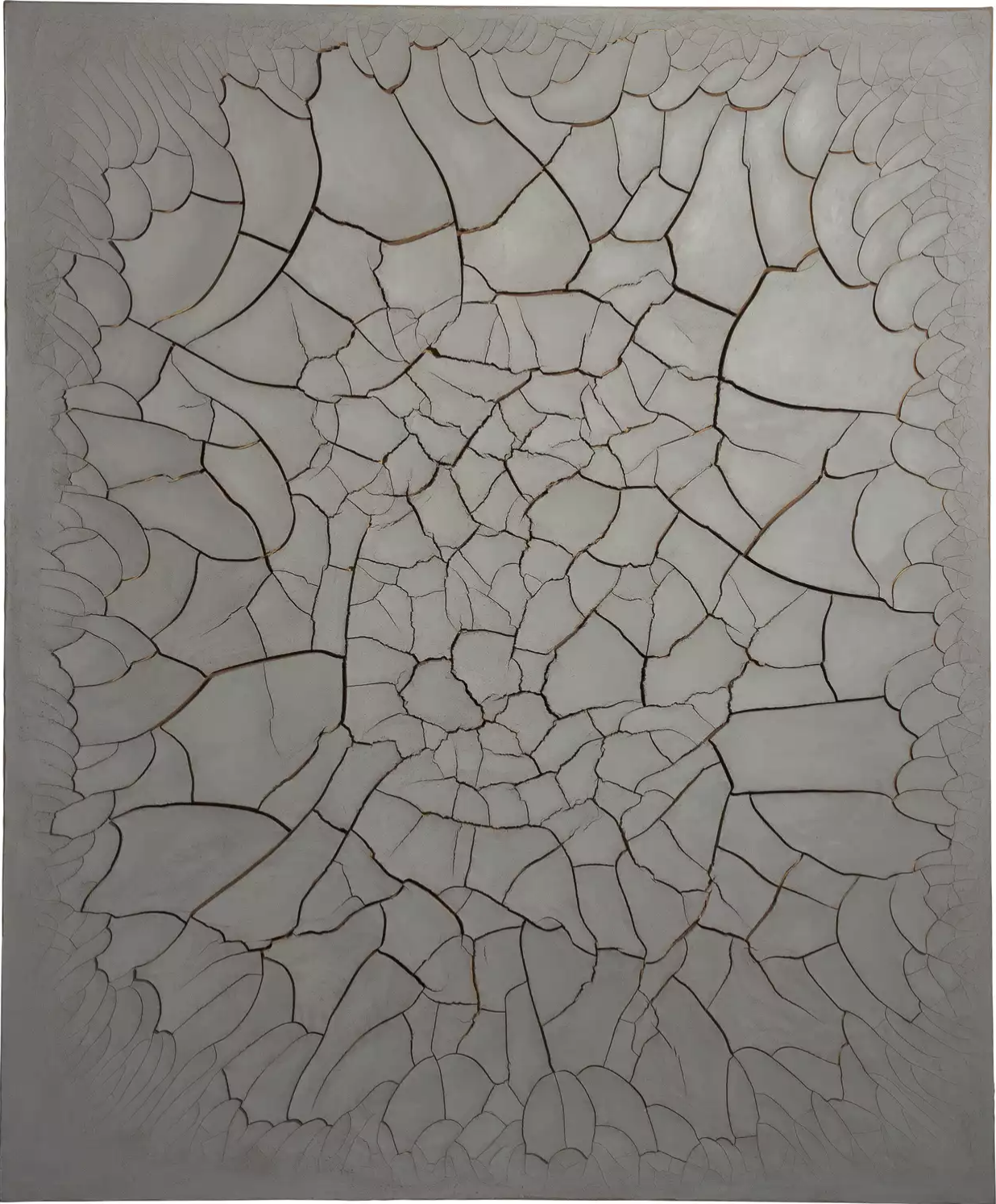Balenciaga one seam coat/ Molas/ Boro - Shashiko Technique
Week Two: Exploring layering and exposing of various fabrics to interpret Mola and Boro techniques
Balenciaga One Seam Coat
.
Balenciaga One Seam Coat .
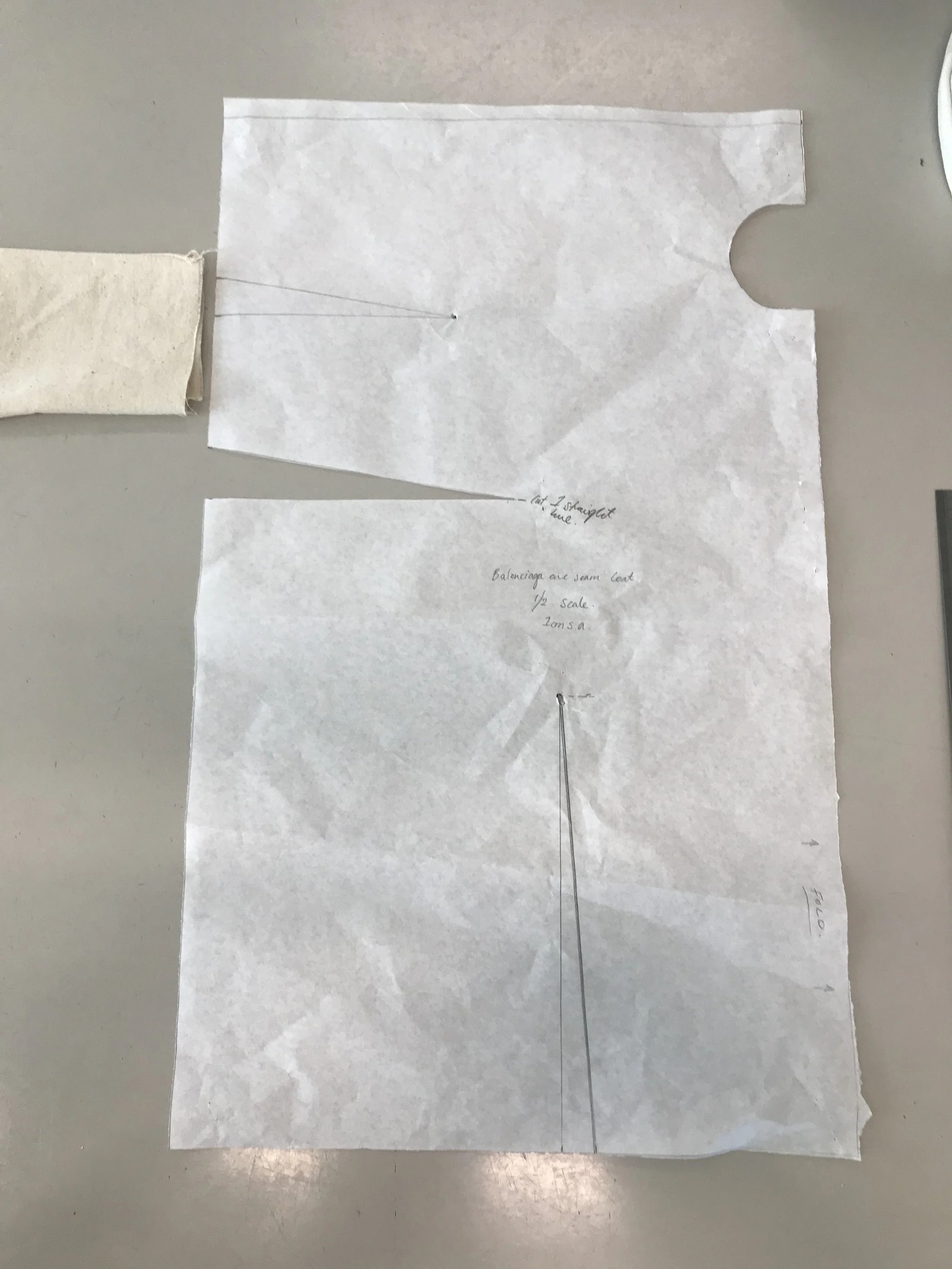
Balenciaga coat Incorrect Pattern, I was meant to only cut a slit in the pattern, however I removed the whole dart value - this was corrected with a new pattern draft
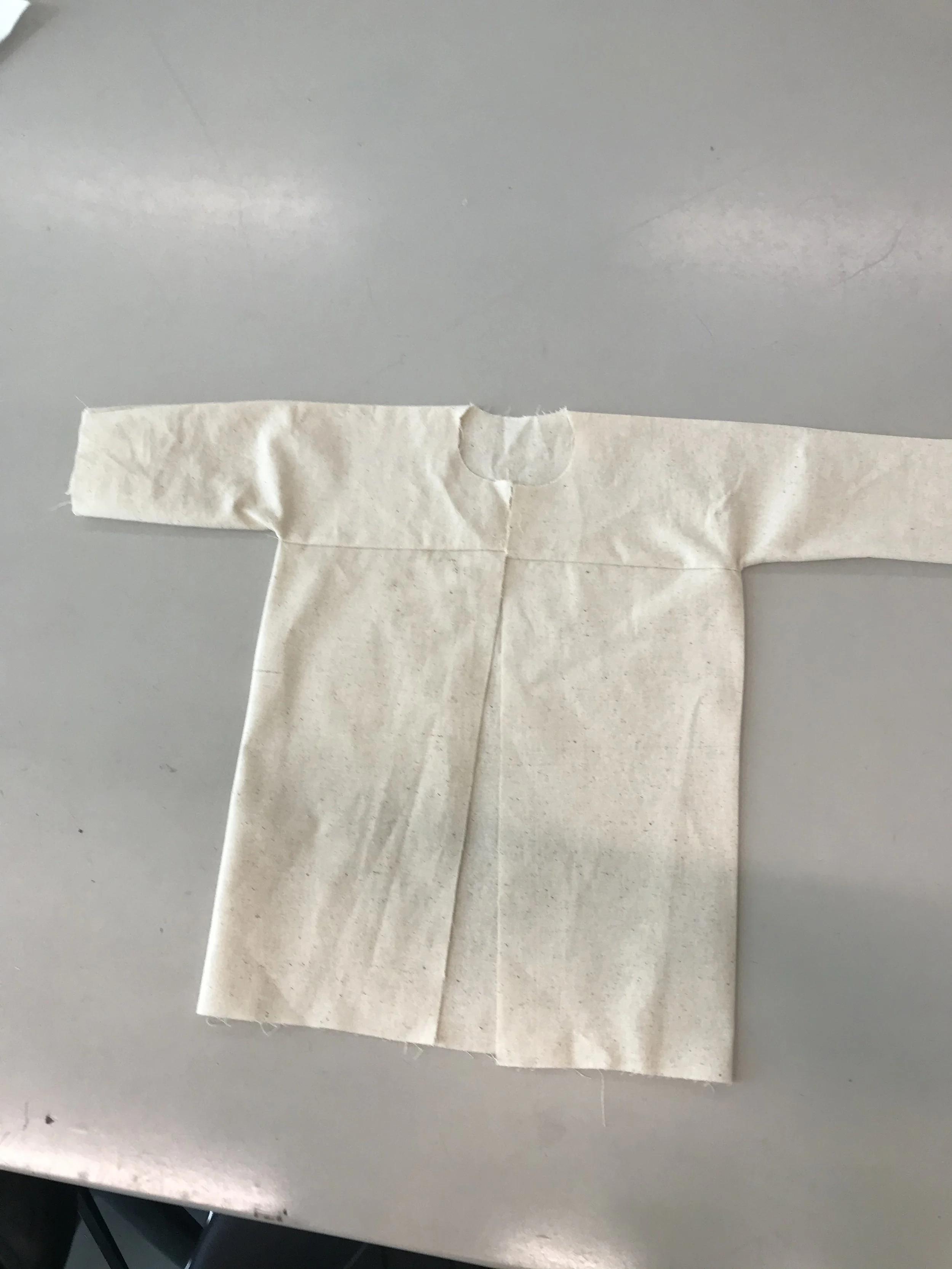
Flat lay of my Balenciaga 1/2 scale coat
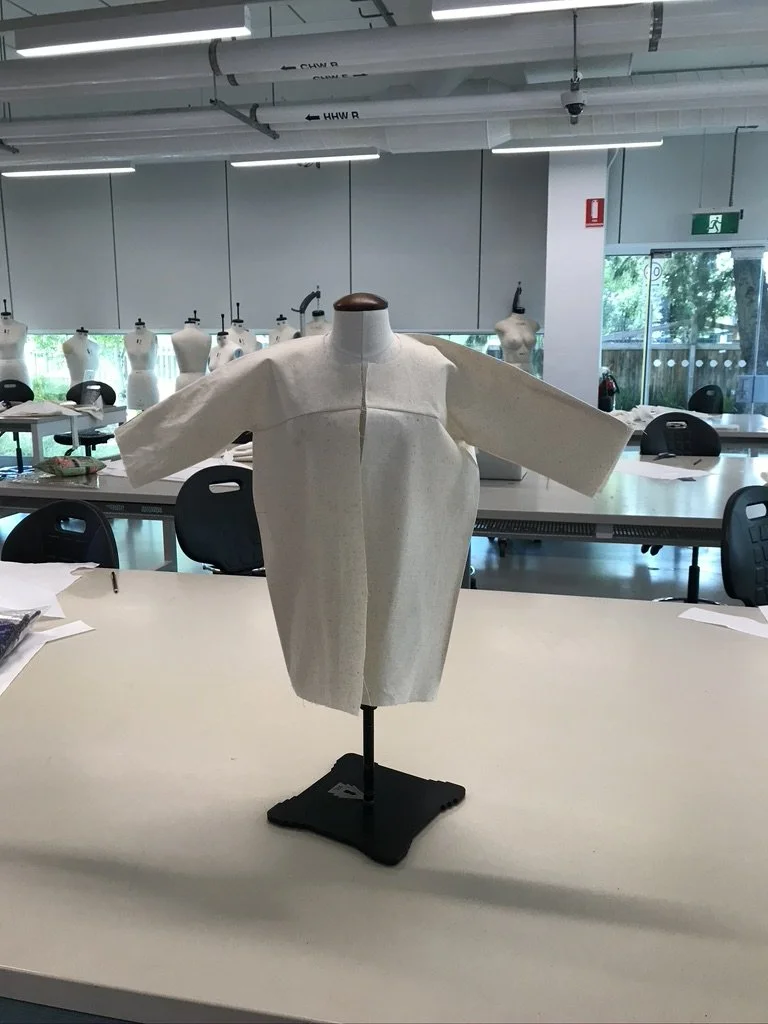
Front of Balenciaga 1/2 scale coat
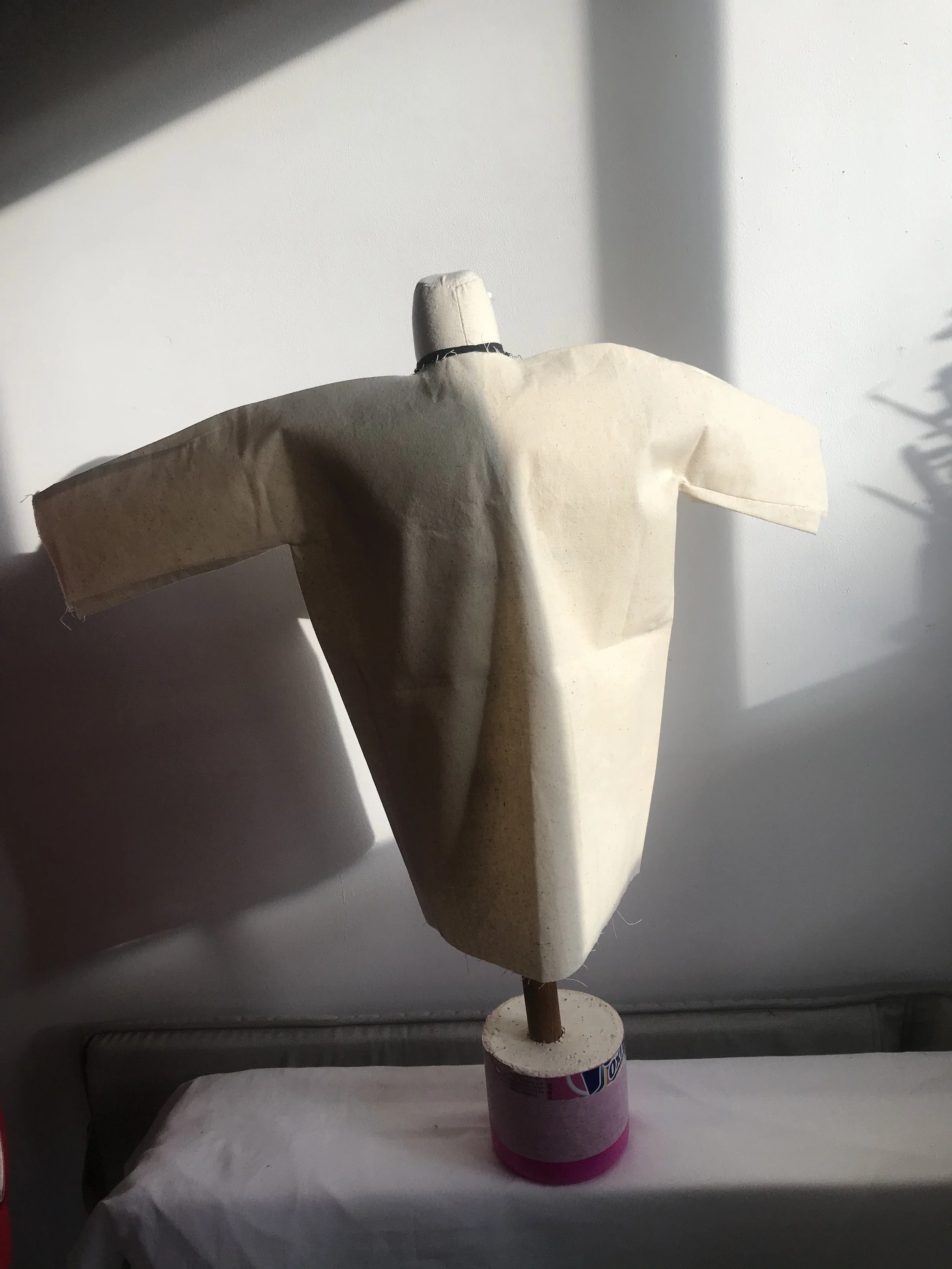
Back of Balenciaga 1/2 scale coat
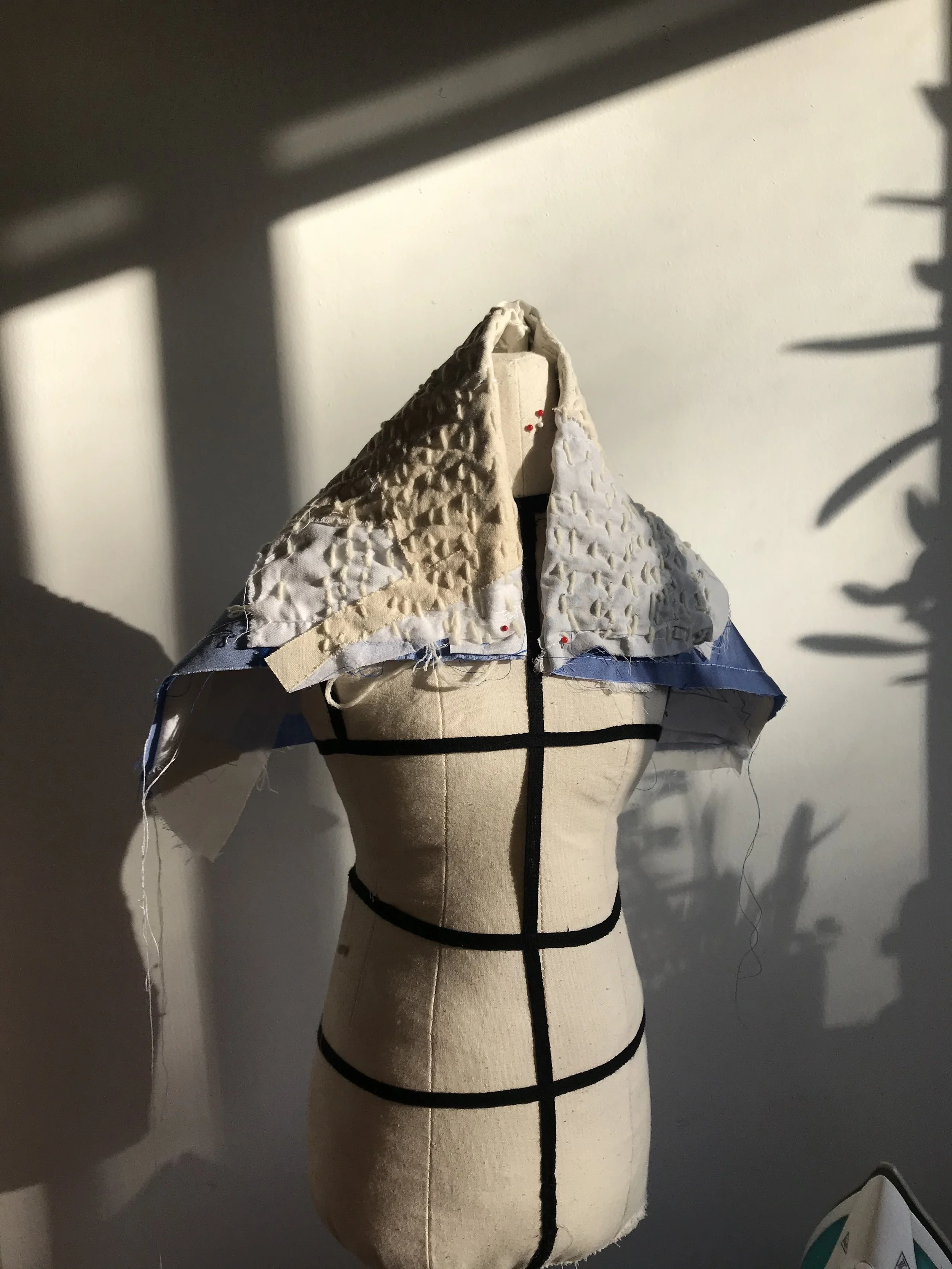
Boro sample draped as a cape/shawl: Fabric off cuts include canvas (heavy weight), Cotton and polyester backing sewn with polyester yarn - Stiffened the handle of the fabric, more pliable and holds it's shape when pinned in various positions
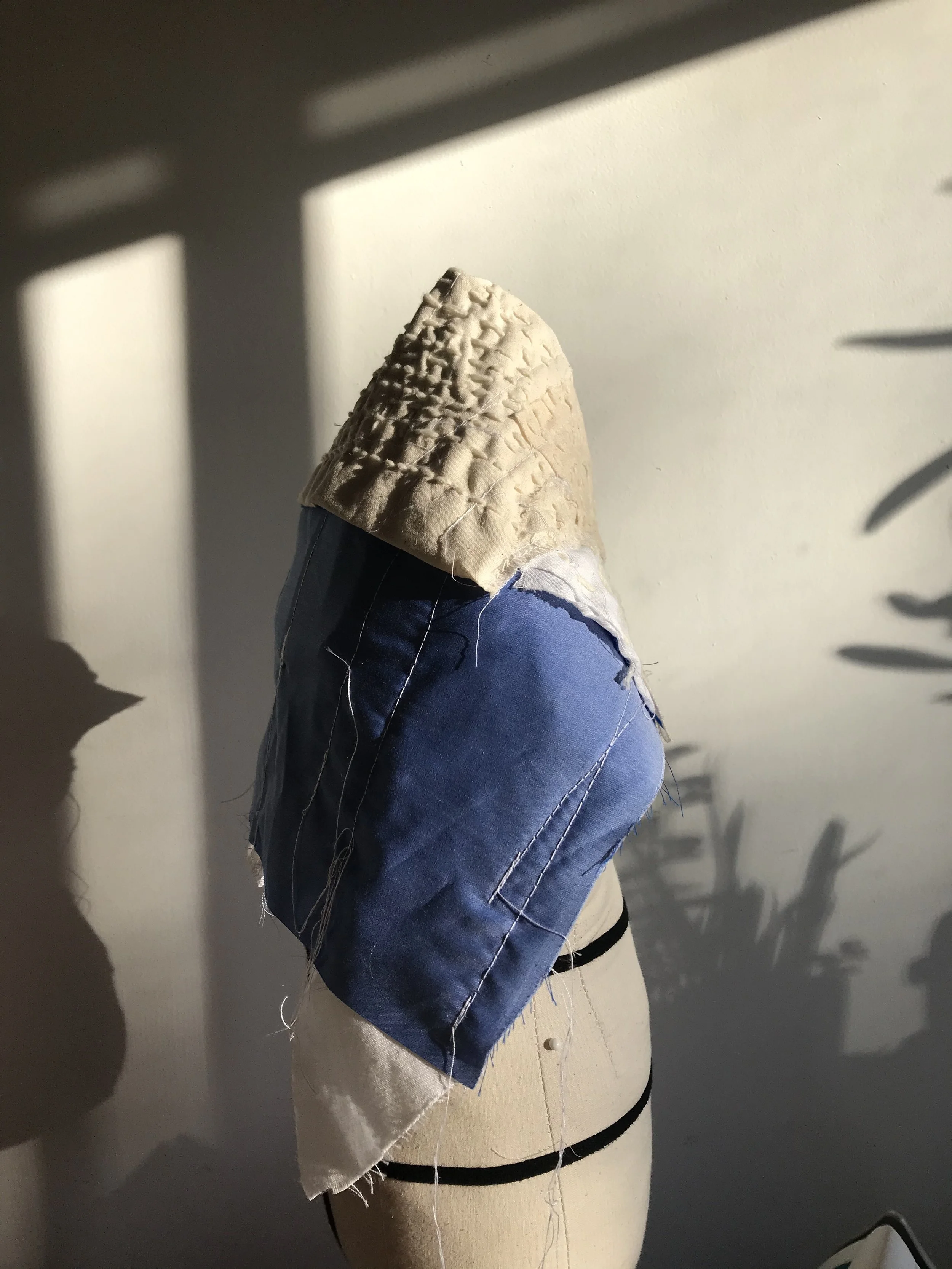
Boro sample draped as a cape/shawl - Side view
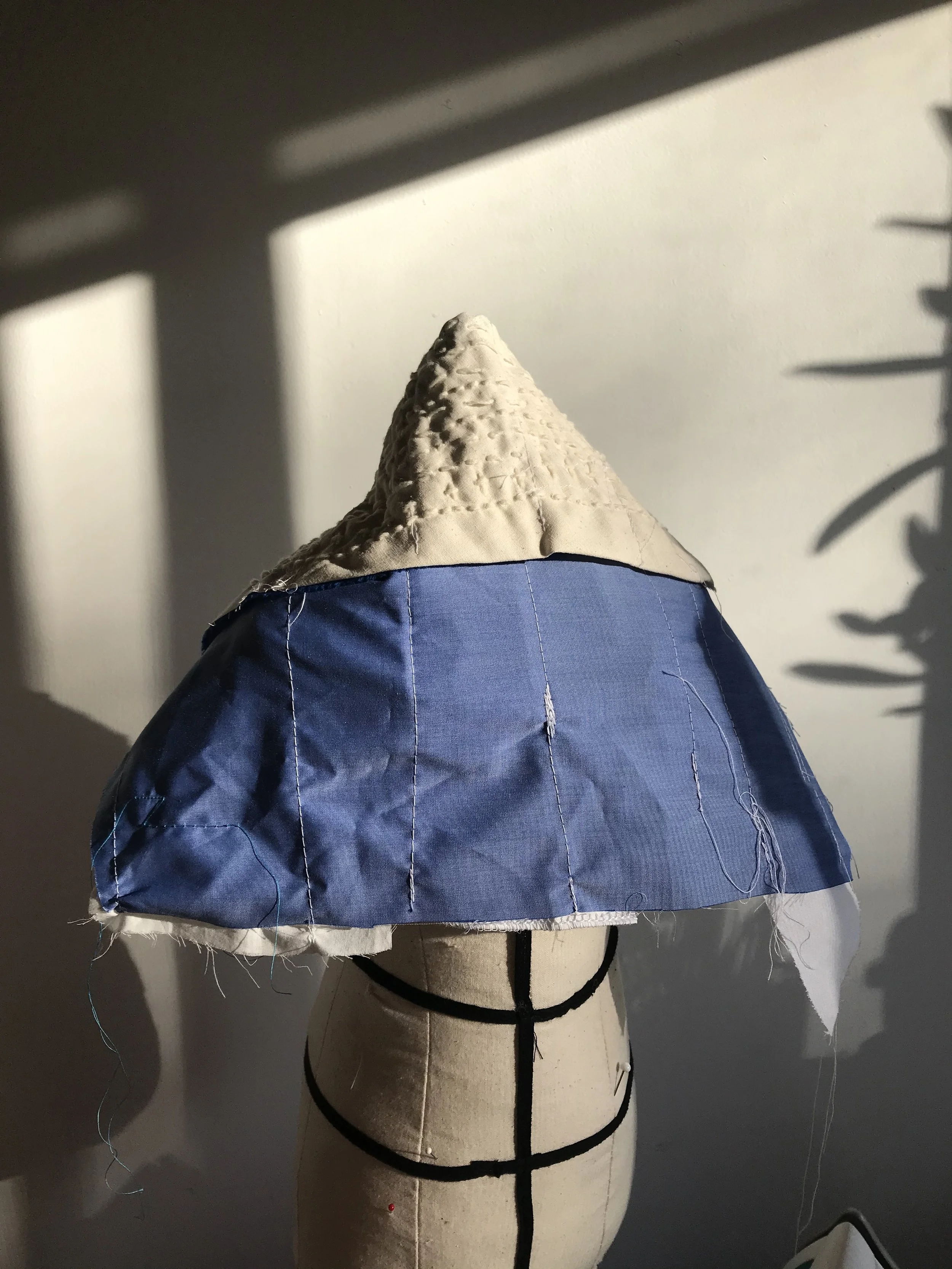
Boro sample draped as a cape/shawl - Back view
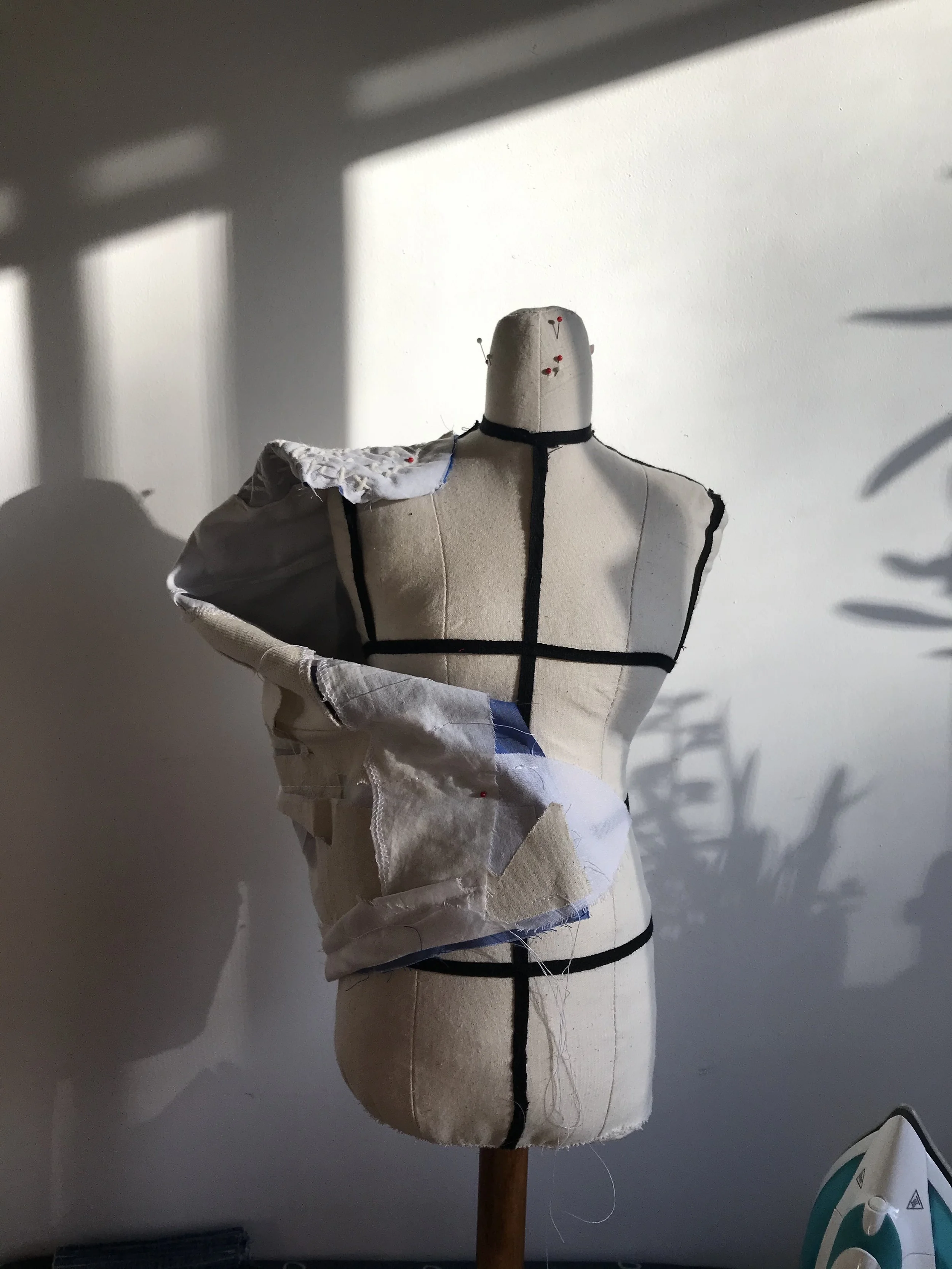
Boro sample draped as a one shoulder tunic: All fabric offcuts were sewn onto the polyester backing fabric prior to applying the series of running stitches, this also added further stability to the sewing process and the final fabric
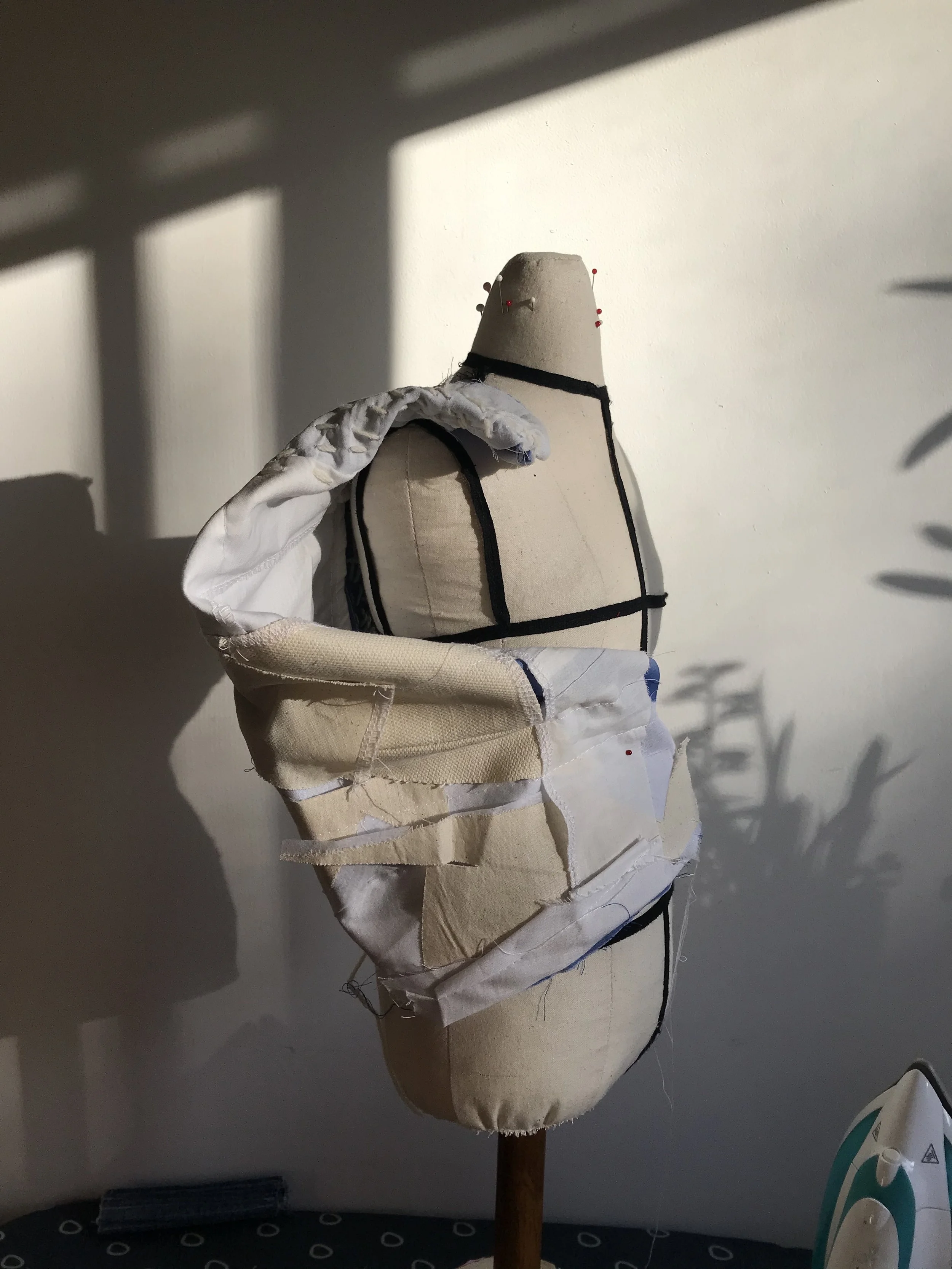
Boro sample draped as a one shoulder tunic - side view
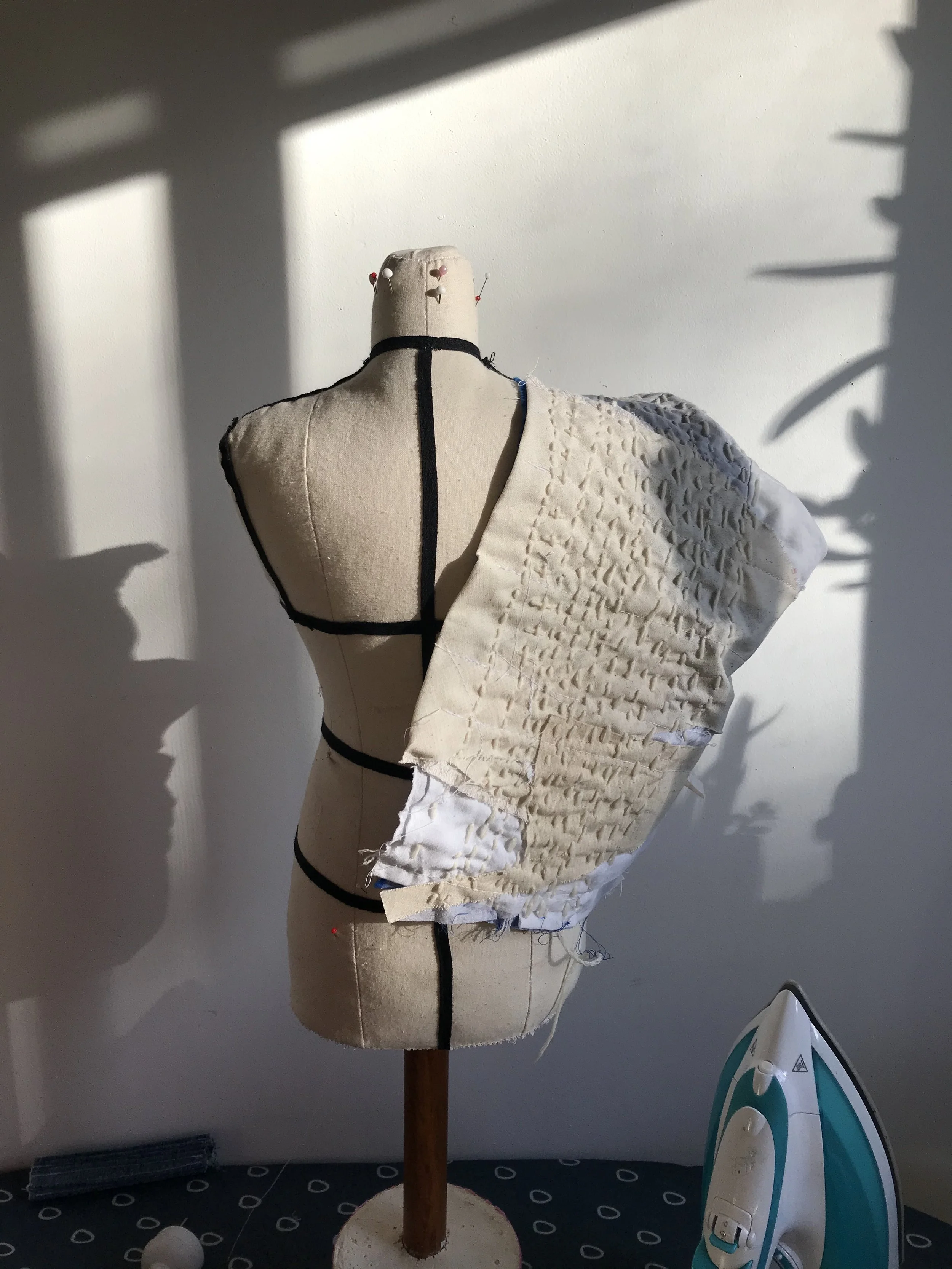
Boro sample draped as a one shoulder tunic - Back view
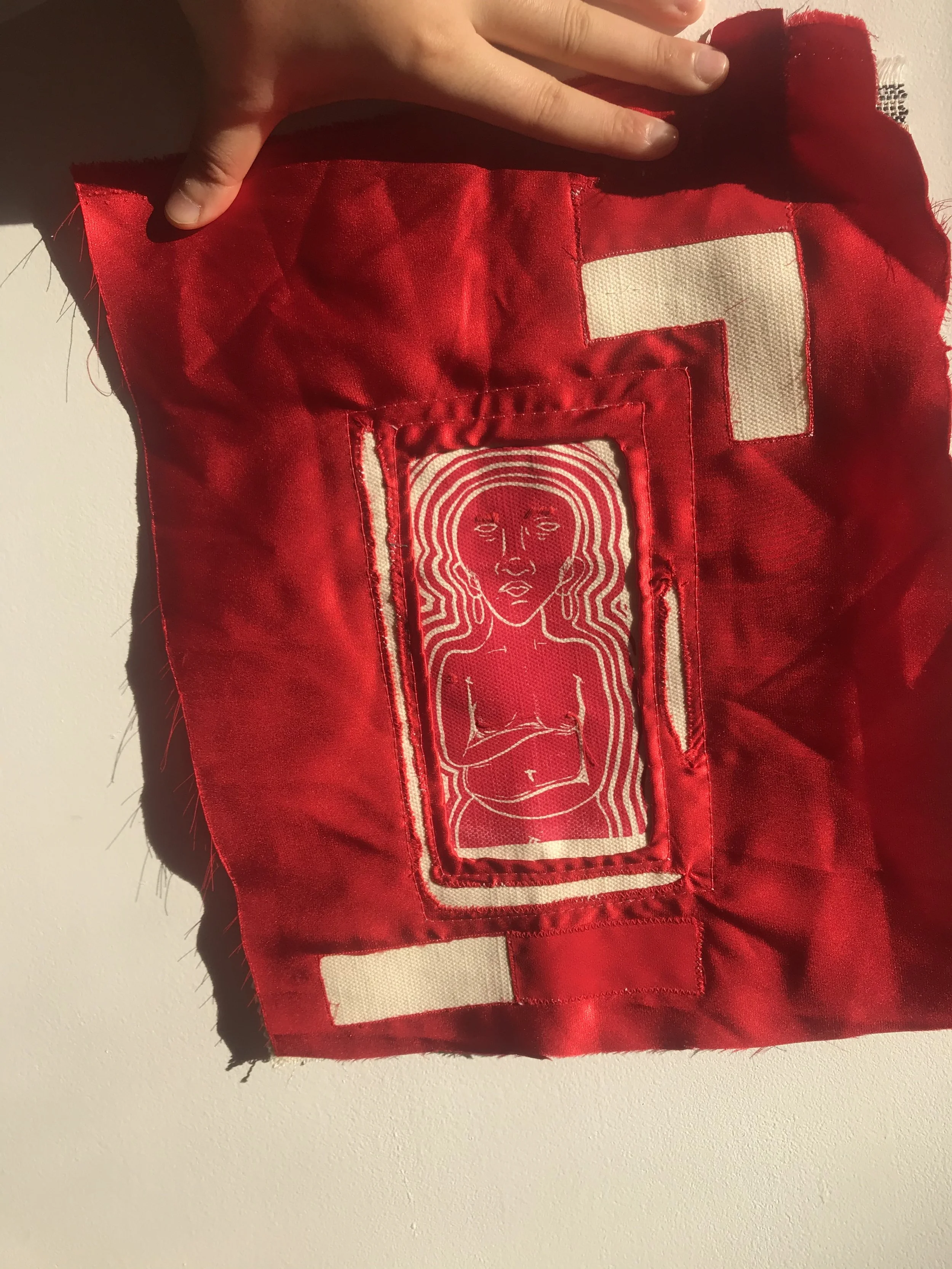
Machine stitched mola sample made with Red Sateen top layer and lino printed canvas as secondary layer. To improve this ample further I would like to widen the spaces between the stay stitches in order to allow for more fabric to be available when slashing and sewing. As a decorative element, this sample would be best used for tote bags, over coat or a decorative wall piece - as the materials have mixed properties (hydrophobic sateen vs Hydrophilic canvas)
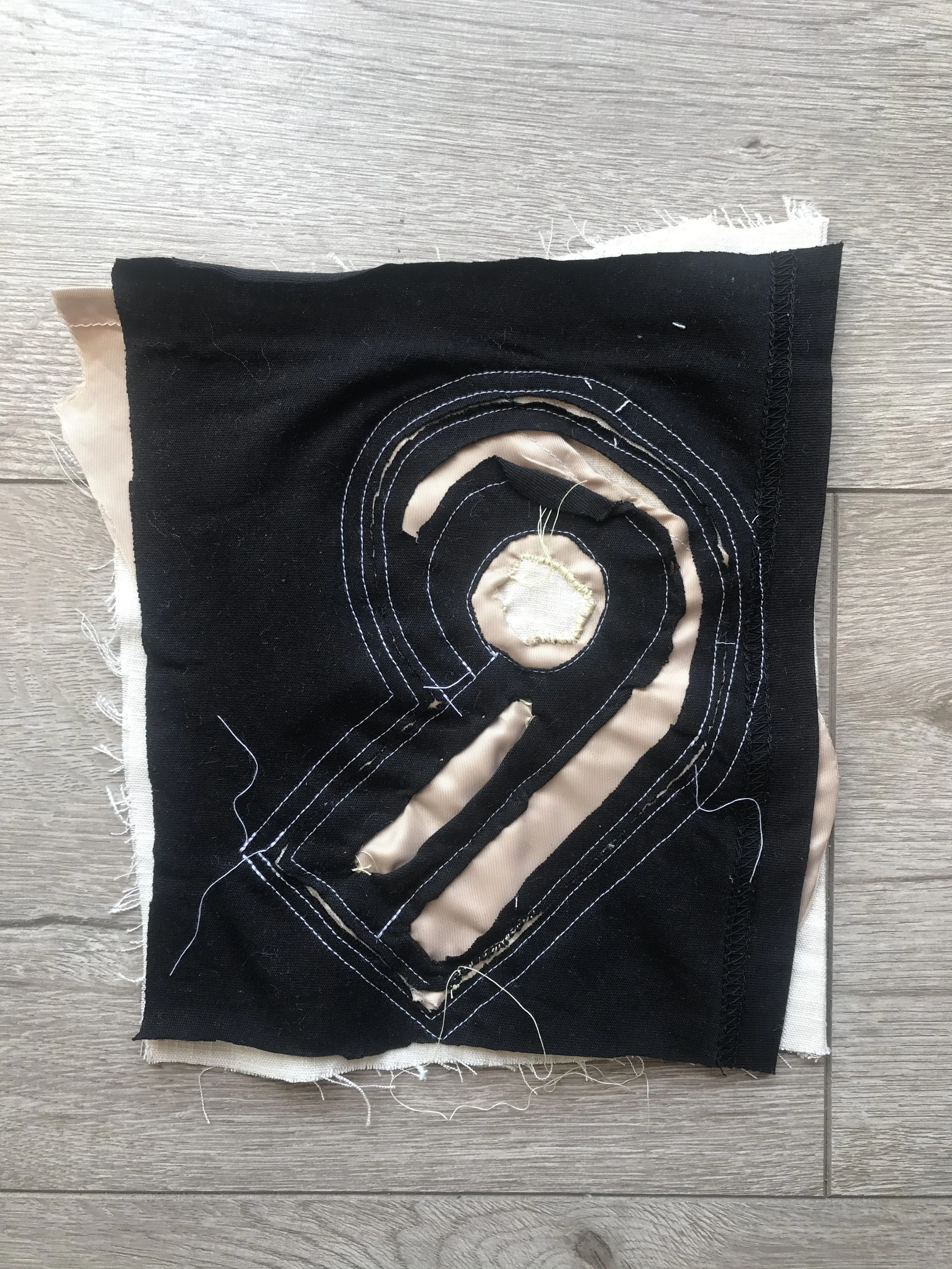
Machine stitched design onto 3 layers of fabric (in order to secure placement/ stay stitches) sample includes: black Poly-cotton knit, peach woven Sateen, woven linen bottom layer : To improve this sample in the future, I would like to make all stay stitching lines wider in order to allow more fabric for hand stitching. This sample was difficult to stitch by hand due to this error.
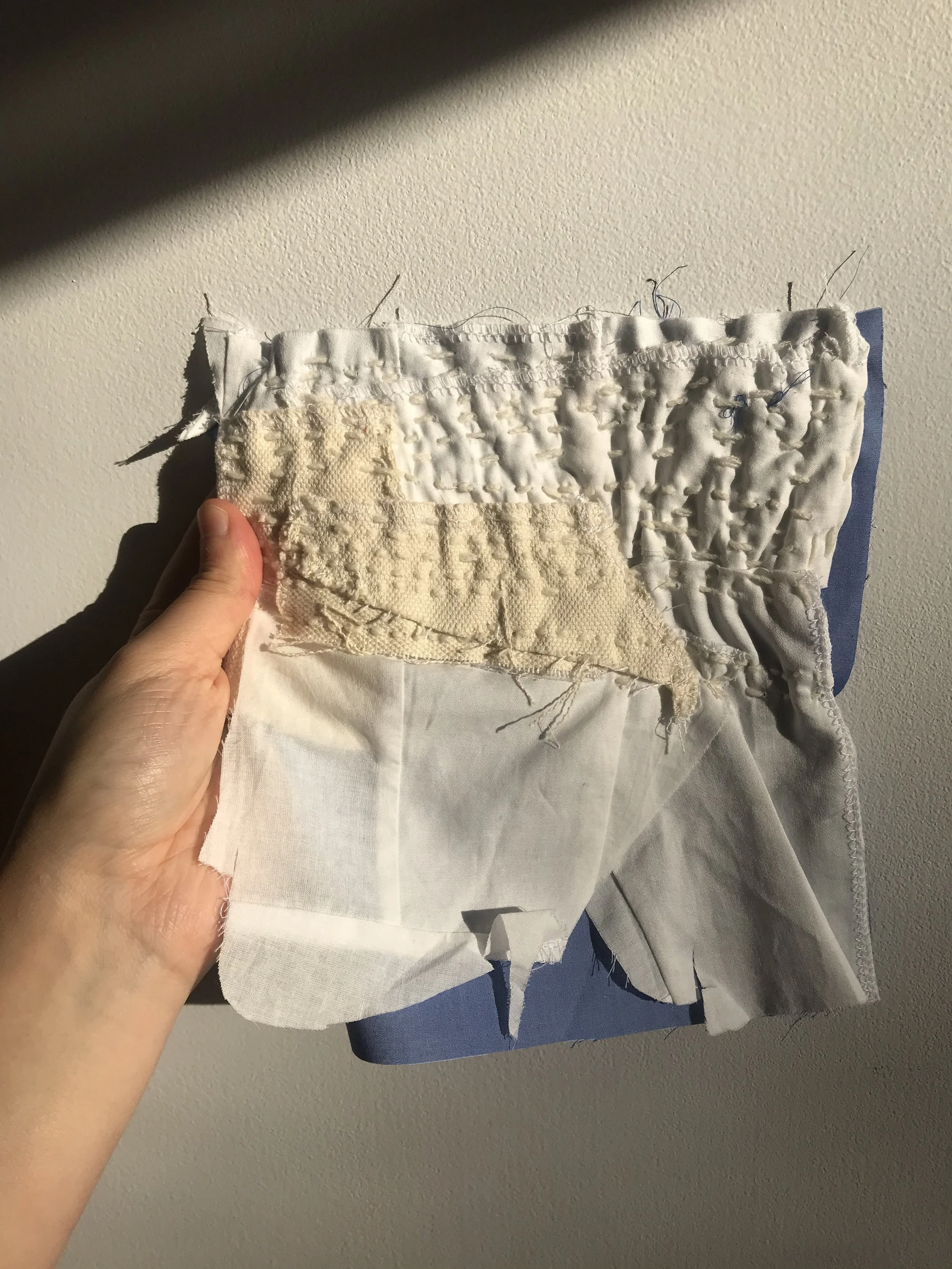
Boro Technique sample is made up of heavy weight canvas, cotton remnants and blue polyester backing. Joined on machine initially to secure the various pieces in place. The running stitch (Polyester yarn was used) was applied after the machine stitch. This added a secondary layer of strength and stiffness to the final handle of this sample, I feel that this technique adds various layers of texture, structure and items such as chairs and jackets would benefit from this durability and strength
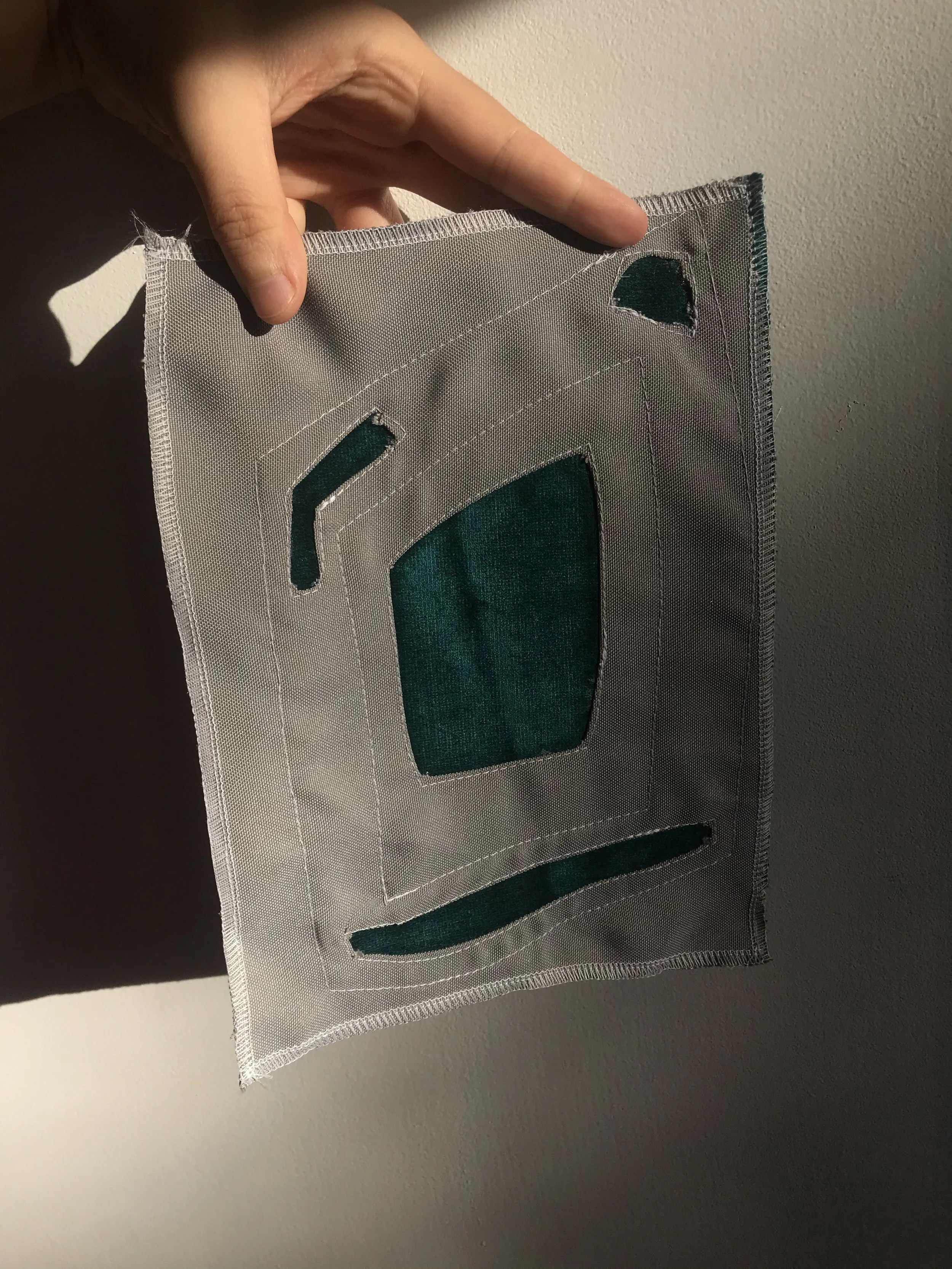
Mola sample: Grey Nylon top layer and Velveteen bottom layer, machine sewn with polyester thread. Outcome is perfect for upholstery/ decorative furnishings as both materials are hydrophobic, perfect for high traffic spaces and use. Material handle is soft yet sturdy with high lustre reflections as the velveteen sits beneath the matte nylon cover. This sample had a great use of "extra" space between stitches, allowing to create a motif like face.
Antoni Gaudí
.
Antoni Gaudí .
Architect, visual artist and sculptor, Antoni Gaudi, known for his marvellous and grand architectural buildings throughout Spain, Gaudi also offered the continuation of his biggest project to date, “La sagrada familia” - “The sacred Family”. Not only is was this project, his biggest to date, but it was the project that saw him complete the plans in order to make sure that the construction was to take place even after his passing. The structures gaudi created, focus on geometric and symbolic notions that serve the similar notion of form following function (as they are in fact buildings) however he always went a step further and focused on the layers of meaning within the works. Adding detail in order to create a seamless body of work.
Spanish architect, Antoni Gaudi's Casa Mila building is located in Barcelona Spain. This building features a concave roof, La Pedrera or "The stone quarry" as it is locally known. The use of line and proportion makes for a hollow yet voluminous structure that serves as a form that follows function
"He considered every detail of his creations and integrated into his architecture such crafts as ceramics, stained glass, wrought ironwork forging and carpentry. He also introduced new techniques in the treatment of materials, such as trencadís which used waste ceramic pieces" - Needpix, 2022
"Commissioned in 1882, the cathedral was funded by donations to encourage Christianity in Barcelona, which was in decline at the time. In 1883 Gaudí took over as chief architect, and he changed the original Neo-Gothic design to one based on the geometric forms found in nature. It was to be Gaudí’s Expressionist vision of a 20th-century cathedral, where he would use visual symbolism to express the many mysteries of the Christian faith" -Brittanica, 2022
Adriana Varejão
.
Adriana Varejão .
Brazillian born visual artist, Adriana Varajão “uses the Baroque tactics of simulation, juxtaposition, and parody to reflect on the mythic pluralism of Brazilian identity and the complex social, cultural, and aesthetic interactions that produced it”. She delivers a Layered approach to colour, line and contrast throughout her works.


